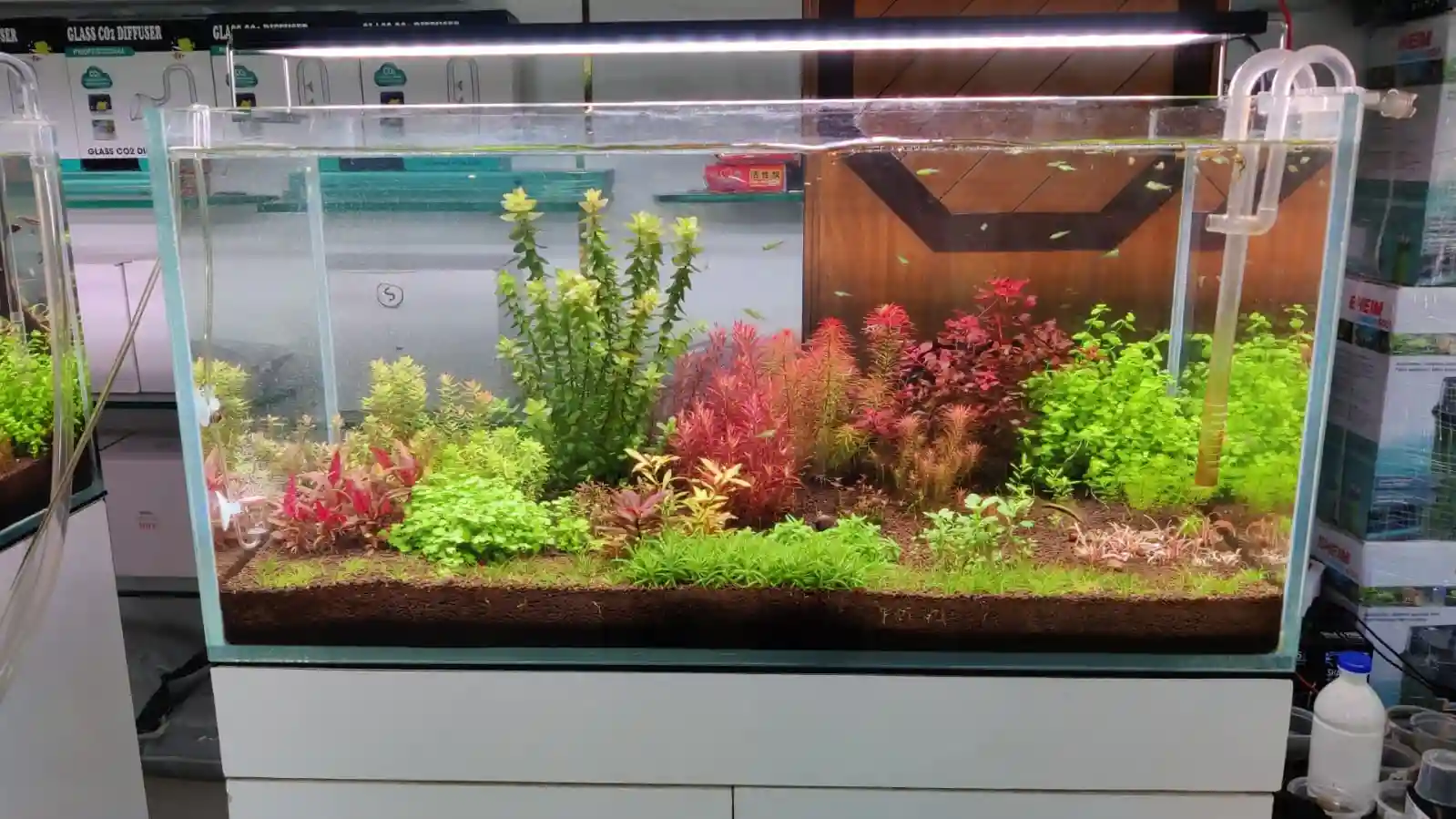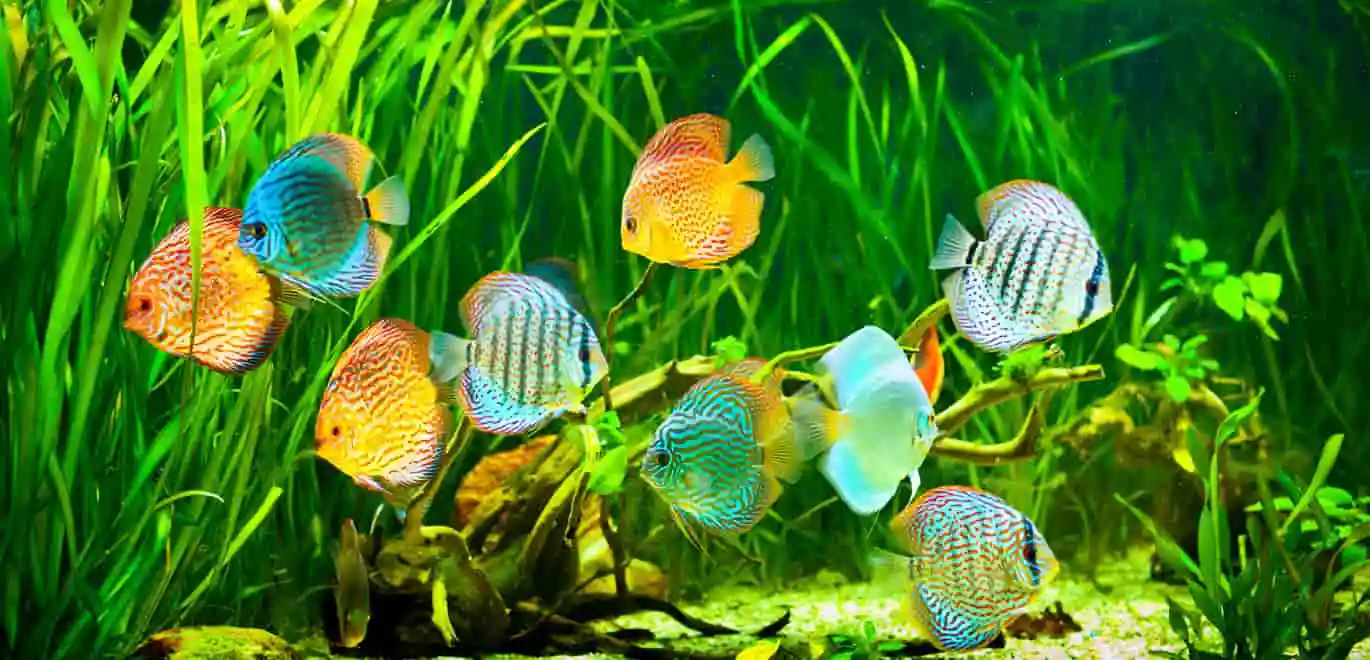What do you Learn from River Gallery? If you are a beginner
Before starting an aquascape, it's important to consider a few key factors to set yourself up for success.
Deciding the Suitable Tank Size
Assessing the appropriate tank size is crucial before starting an aquascape. Consider the available space, your budget, and the type of aquascape you want to create. Different aquascapes require different tank sizes to accommodate the desired plants, fish, and other aquatic inhabitants. Aquarium Accessories Wholesaler in Raipur we research and understand the requirements of the plants and animals you plan to keep, and choose a tank size that can provide them with ample space and optimal living conditions

Choosing Right Filteration & Light
Choosing the right filtration and lighting system is crucial for maintaining a healthy and thriving aquarium. At River Gallery, as Aquarium Accessories Wholesaler in Raipur and Aquascape Store, we understand the importance of proper filtration and lighting in creating an optimal environment for your aquatic pets and plants.
Filtration
We offer a range of filtration options, including mechanical, chemical, and biological filtration systems. Our experienced team can guide you in choosing the right filtration system based on the size of your aquarium, the type of fish and plants you have, and the specific needs of your aquatic ecosystem. Effective filtration helps remove impurities, toxins, and debris from the water, ensuring a clean and safe environment for your aquatic life.

Lighting
The right lighting system is essential for promoting healthy growth and vibrant colors in your aquarium. Our Aquascape Store in Raipur provides a variety of lighting options, including LED lights, fluorescent lights, and specialized plant lights. River Gallery can assist you in selecting the appropriate lighting system based on the type of fish and plants you have, their light requirements, and the aesthetic you want to achieve in your aquarium.

Introducing Bacterial Colonization
Bacterial colonization refers to the establishment and growth of bacteria on a particular surface or within a specific area.
It is a natural process that occurs in various environments, including the human body, soil, water, and other surfaces. Bacteria have the ability to adhere to surfaces and form biofilms, which are complex communities of bacteria embedded in a self-produced matrix.
Impacts of Bacterial Colonization
Beneficial bacteria play a crucial role in maintaining a healthy aquarium by facilitating the nitrogen cycle. These bacteria naturally colonize the aquarium, particularly in the filter media and susbtrate. One effective way to prompte bacterial colonization is by using biomedia in the filter.
Biomedia provides a large surface area for the beneficial bacteria to grow and thrive. As water passes through the biomedia, the bacteria attach themselves to its surfaces and break down harmful ammonia and nitrate into less toxic nitrate. This process is known as nitrification, helps to maintain optimal water conditions for the fish and other aquatic inhabitants.
Excessive nitrates can lead to water quality issues and negatively impact the health of the aquarium. By utilizing biomedia in the filter, the beneficial bacteria can effectively convert Nitrite to nitrate reducing the nitrate levels in the water.
Regular maintenance, such as cleaning or replacing the biomedia, is important to ensure the continuous function of the baceria colony. Therefore our aquarium experts recommend you to use biomedia with filter.
Adding Fishes to your Aquarium Acclimation
Adding fishes to your aquarium acclimation is the process of gradually introducing new fish to their new aquatic environment. River Gallery explains the important steps to ensure the health and well-being of the fish and to minimize stress during the transition.
The acclimation process involves several steps. Firstly, it is essential to float the fish in their original packaging or a separate bag within the aquarium for about 15-20 minutes. This allows the water temperature inside the bag to gradually adjust to that of the aquarium, preventing sudden temperature shocks.

Next, it is recommended to slowly add small amounts of aquarium water into the bag at regular intervals over a period of time, usually 15-30 minutes. This helps the fish to gradually adjust to the water chemistry of the aquarium, including pH levels and dissolved oxygen content.
After the acclimation period, gently net the fish out of the bag and release them into the aquarium. It is crucial to avoid adding the water from the bag into the aquarium, as it may contain pathogens or contaminants from the fish's original environment.
Proper acclimation helps to reduce the stress on the fish, allowing them to adjust to their new surroundings and minimize the risk of shock or disease. It is advisable to closely monitor the newly introduced fish for the first few days to ensure they are behaving normally and eating well.
Remember, each species of fish may have specific acclimation requirements, so it is important to research and understand the specific needs of the fish you are adding to your aquarium. By following proper acclimation procedures, you can promote the health and longevity of your aquarium fish.
Driping Acclimation Process
Dripping acclimation is a method used to acclimate new fish or other aquatic organisms to the water parameters of their new aquarium. The process involves gradually introducing the organisms to the water in the aquarium to minimize stress and provide a smoother transition.
Here River Gallery explanation step-by-step the process to our valuable clients:
Prepare a container
Transfer the new fish into a container filled with their original water. This container should be separate from the main aquarium.
Set up the drip system
Attach a siphon pipe to the container, ensuring that there is an air control valve to regulate the flow of water. The other end of the siphon pipe should be placed into the aquarium.
Adjust the drip rate
Start the dripping process by adjusting the air control valve to allow one drop of water per second to enter the container from the aquarium. This slow and controlled drip ensures a gradual transition of water parameters.
Monitor and wait
Allow the dripping process to continue for about 30-40 minutes. During this time, the water from the aquarium gradually mixes with the water in the container, helping the fish adjust to the new water parameters.
Transfer the fish
After the acclimation period, carefully transfer the fish from the container into a net or clean bucket without including the water from the container. This step is done to avoid any potential water contamination.
Introduce to the aquarium
Gently place the fish from the net into the aquarium, ensuring a smooth transition. Take care not to introduce any water from the container into the aquarium.
Some other Benefits Biological Filtration
Cycling the Tank: Cycling the tank refers to establishing the biological filtration system before introducing fish. This process allows beneficial bacteria to develop and convert toxic ammonia into less harmful substances. It typically involves the following stages.
Ammonia Phase: Biological filtration plays a crucial role in the ammonia phase of the nitrogen cycle in an aquarium. To establish beneficial bacteria colonies, it is recommended to add a source of ammonia.
One effective and reliable method is using products like Tropical Booster from the brand Neo by the company Aquario, which provides the necessary ammonia source to initiate the growth of beneficial bacteria and ensure a stable and healthy aquarium environment.
Nitrite Phase: As the bacterial colony grows, ammonia is converted into nitrite.
Nitrate Phase: Nitrite is further converted into nitrate, which can be managed through regular water changes.
